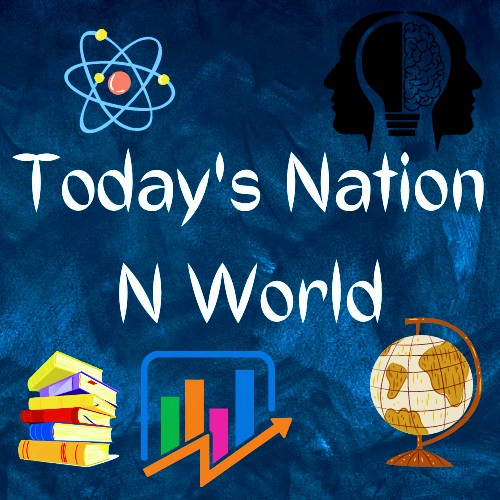Indian history is a testament to the country's relentless fight for freedom and justice. Revolutionary movements played a pivotal role in shaping India's path toward independence. For UPSC and MPSC aspirants, understanding these revolutionary movements in Indian history is crucial for acing the history section. In this article, we explore 10 significant movements, highlighting their dates, significance, and outcomes, to help you grasp their impact better.
1. The Revolt of 1857 (First War of Independence)
Date: 1857
Significance: Known as the first large-scale uprising against British rule, this movement united various sections of Indian society.
Outcome: The revolt led to the dissolution of the East India Company and direct British rule over India.
Key Fact: Sparked by the issue of greased cartridges, the revolt symbolizes deeper discontent with British policies.
2. Partition of Bengal and Swadeshi Movement
Date: 1905–1911
Significance: Protested against the partition of Bengal by promoting the use of indigenous goods to foster self-reliance.
Outcome: The British annulled the partition in 1911 due to nationwide pressure.
Key Fact: The movement marked the rise of freedom struggle milestones in India.
3. Jallianwala Bagh Massacre and Rowlatt Satyagraha
Date: 1919
Significance: A response to the Rowlatt Act, which allowed detention without trial, and the Jallianwala Bagh massacre.
Outcome: Galvanized anti-colonial unity and inspired future movements.
Key Fact: Gandhi’s Satyagraha emphasized civil disobedience and non-cooperation with oppressive laws.
4. Non-Cooperation Movement
Date: 1920–1922
Significance: This revolutionary movement in Indian history aimed to boycott British goods, schools, and titles to assert self-rule.
Outcome: Called off after the Chauri Chaura incident but succeeded in mobilizing millions.
Key Fact: Gandhi emerged as a national leader during this time.
5. Civil Disobedience Movement
Date: 1930–1934
Significance: Marked by defiance of British laws, especially during the Salt Satyagraha led by Mahatma Gandhi.
Outcome: Led to negotiations like the Gandhi-Irwin Pact and strengthened the freedom struggle.
Key Fact: Women leaders like Sarojini Naidu played a vital role, symbolizing freedom struggle milestones.
6. Quit India Movement
Date: 1942
Significance: Launched with the slogan "Do or Die," the movement demanded immediate independence.
Outcome: Demonstrated India’s readiness for freedom despite brutal British suppression.
Key Fact: This movement is a pivotal part of Indian history for UPSC exams.
7. Revolutionary Activities by Hindustan Socialist Republican Association (HSRA)
Date: 1924–1931
Significance: Armed rebellion led by Bhagat Singh, Chandrashekhar Azad, and others against British rule.
Outcome: Though suppressed, it ignited defiance and inspired revolutionary movements in Indian history.
Key Fact: Bhagat Singh's martyrdom is a symbol of youth-led revolutions.
8. Subhas Chandra Bose and the INA Movement
Date: 1943–1945
Significance: Subhas Chandra Bose formed the Indian National Army (INA) to fight against British rule with Japanese support.
Outcome: Although the INA was defeated, it inspired widespread support for independence.
Key Fact: Bose’s iconic slogan, "Give me blood, and I will give you freedom," remains part of freedom struggle milestones.
9. Purna Swaraj Declaration
Date: 1929
Significance: The Lahore Session of the Indian National Congress declared complete independence as its goal.
Outcome: January 26, 1930, was celebrated as Independence Day, intensifying the freedom struggle.
Key Fact: This declaration laid the foundation for independence in 1947.
10. Naval Mutiny of 1946
Date: February 1946
Significance: A revolt by Indian sailors against British policies, inspired by nationalist fervor.
Outcome: Showed that British control over Indian forces was weakening.
Key Fact: The mutiny demonstrated solidarity across religions and regions, making it a crucial part of Indian history for UPSC exams.
Conclusion
The revolutionary movements in Indian history shaped the nation’s destiny and are crucial for exam preparation. By understanding their significance, outcomes, and key facts, you’ll not only enhance your knowledge but also connect deeply with India’s fight for freedom. Keep revising, and good luck with your preparation.
भारतीय इतिहासातील 10 क्रांतिकारी चळवळी: UPSC आणि MPSC इच्छुकांसाठी आवश्यक
भारतीय इतिहास हा देशाच्या स्वातंत्र्य आणि न्यायासाठीच्या अथक लढ्याचा पुरावा आहे. क्रांतिकारक चळवळींनी भारताच्या स्वातंत्र्याच्या वाटेला आकार देण्यात मोलाची भूमिका बजावली. UPSC आणि MPSC इच्छुकांसाठी, भारतीय इतिहासातील या क्रांतिकारी चळवळी समजून घेणे, इतिहास विभागाचा अभ्यास करण्यासाठी महत्त्वपूर्ण आहे.
1. 1857 चे विद्रोह (पहिले स्वातंत्र्य युद्ध)
तारीख: 1857
महत्त्व: ब्रिटिश राजवटीविरुद्धचा पहिला मोठा उठाव म्हणून ओळखल्या जाणाऱ्या या चळवळीने भारतीय समाजातील विविध घटकांना एकत्र केले.
परिणाम: बंडामुळे ईस्ट इंडिया कंपनीचे विघटन झाले आणि भारतावर थेट ब्रिटिश शासन झाले.
मुख्य वस्तुस्थिती: ग्रीस केलेल्या काडतुसांच्या मुद्द्यामुळे उद्भवलेले, बंड ब्रिटीश धोरणांवरील तीव्र असंतोषाचे प्रतीक आहे.
2. बंगालची फाळणी आणि स्वदेशी चळवळ
तारीख: 1905-1911
महत्त्व: स्वावलंबन वाढवण्यासाठी स्वदेशी वस्तूंच्या वापराला प्रोत्साहन देऊन बंगालच्या फाळणीला विरोध केला.
परिणाम: देशव्यापी दबावामुळे ब्रिटिशांनी 1911 मध्ये फाळणी रद्द केली.
महत्त्वाची वस्तुस्थिती: या चळवळीने भारतातील स्वातंत्र्य लढ्याचे टप्पे गाठले.
3. जालियनवाला बाग हत्याकांड आणि रौलेट सत्याग्रह
तारीख: १९१९
महत्त्व: रौलट कायद्याला प्रतिसाद, ज्याने चाचणीशिवाय अटकेची परवानगी दिली आणि जालियनवाला बाग हत्याकांड.
परिणाम: गॅल्वनाइज्ड वसाहतविरोधी ऐक्य आणि भविष्यातील हालचालींना प्रेरणा.
मुख्य तथ्य: गांधींच्या सत्याग्रहाने सविनय कायदेभंग आणि जुलमी कायद्यांशी असहकार करण्यावर भर दिला.
4. असहकार चळवळ
तारीख: 1920-1922
महत्त्व: भारतीय इतिहासातील या क्रांतिकारी चळवळीचे उद्दिष्ट ब्रिटिश वस्तूंवर, शाळांवर आणि पदव्यांवर बहिष्कार टाकून स्वराज्य गाजवण्यासाठी होते.
निकालः चौरी चौरा घटनेनंतर बंद पुकारला पण लाखोंची गर्दी जमवण्यात यश आले.
मुख्य तथ्य: या काळात गांधी राष्ट्रीय नेते म्हणून उदयास आले.
5. सविनय कायदेभंग चळवळ
तारीख: 1930-1934
महत्त्व: ब्रिटीश कायद्यांचे उल्लंघन करून चिन्हांकित केले, विशेषत: महात्मा गांधींच्या नेतृत्वाखालील मीठ सत्याग्रहादरम्यान.
परिणाम: गांधी-आयर्विन करारासारख्या वाटाघाटींचे नेतृत्व केले आणि स्वातंत्र्य लढ्याला बळकटी दिली.
महत्त्वाची वस्तुस्थिती: सरोजिनी नायडू सारख्या महिला नेत्याने महत्त्वाची भूमिका बजावली, ती स्वातंत्र्यलढ्यातील टप्पे यांचे प्रतीक आहे.
6. भारत छोडो आंदोलन
तारीख: 1942
महत्त्व: "करा किंवा मरो" या घोषणेसह सुरू झालेल्या या चळवळीने त्वरित स्वातंत्र्याची मागणी केली.
परिणाम: ब्रिटीशांच्या क्रूर दडपशाहीला न जुमानता स्वातंत्र्यासाठी भारताची तयारी दर्शविली.
मुख्य तथ्य: ही चळवळ यूपीएससी परीक्षांसाठी भारतीय इतिहासाचा एक महत्त्वाचा भाग आहे.
7. हिंदुस्थान सोशालिस्ट रिपब्लिकन असोसिएशन (HSRA) द्वारे क्रांतिकारी उपक्रम
तारीख: 1924-1931
महत्त्व: भगतसिंग, चंद्रशेखर आझाद आणि इतरांनी ब्रिटीश राजवटीविरुद्ध सशस्त्र बंड केले.
परिणाम: दडपून टाकले असले तरी, त्याने अवहेलना प्रज्वलित केली आणि भारतीय इतिहासातील क्रांतिकारी चळवळींना प्रेरणा दिली.
मुख्य तथ्य: भगतसिंग यांचे हौतात्म्य हे तरुणांच्या नेतृत्वाखालील क्रांतीचे प्रतीक आहे.
8. सुभाषचंद्र बोस आणि INA चळवळ
तारीख: 1943-1945
महत्त्व: सुभाष चंद्र बोस यांनी जपानच्या पाठिंब्याने ब्रिटिश राजवटीविरुद्ध लढण्यासाठी इंडियन नॅशनल आर्मी (INA) ची स्थापना केली.
परिणाम: जरी INA पराभूत झाला, तरी त्याने स्वातंत्र्यासाठी व्यापक समर्थन प्रेरित केले.
महत्त्वाची वस्तुस्थिती: "मला रक्त द्या, आणि मी तुम्हाला स्वातंत्र्य देईन," हे बोस यांचे प्रतिष्ठित घोषवाक्य स्वातंत्र्य संग्रामातील टप्पे आहेत.
9. पूर्ण स्वराज घोषणा
तारीख: १९२९
महत्त्व: भारतीय राष्ट्रीय काँग्रेसच्या लाहोर अधिवेशनाने पूर्ण स्वातंत्र्य हे आपले ध्येय घोषित केले.
परिणाम: 26 जानेवारी 1930 हा स्वातंत्र्य दिन म्हणून साजरा केला गेला, स्वातंत्र्य लढा अधिक तीव्र झाला.
मुख्य तथ्य: या घोषणेने 1947 मध्ये स्वातंत्र्याचा पाया घातला.
10. 1946 चा नौदल बंड
तारीख: फेब्रुवारी १९४६
महत्त्व: ब्रिटीश धोरणांविरुद्ध भारतीय खलाशांनी केलेला उठाव, राष्ट्रवादीच्या उत्साहाने प्रेरित.
परिणाम: भारतीय सैन्यावरील ब्रिटिशांचे नियंत्रण कमकुवत होत असल्याचे दिसून आले.
मुख्य तथ्य: विद्रोहाने धर्म आणि प्रदेशांमध्ये एकता दर्शविली, ज्यामुळे तो UPSC परीक्षांसाठी भारतीय इतिहासाचा एक महत्त्वाचा भाग बनला.
निष्कर्ष
भारतीय इतिहासातील क्रांतिकारी चळवळींनी देशाचे नशीब घडवले आणि परीक्षेच्या तयारीसाठी त्या महत्त्वपूर्ण आहेत. त्यांचे महत्त्व, परिणाम आणि मुख्य तथ्ये समजून घेऊन, तुम्ही केवळ तुमचे ज्ञान वाढवू शकत नाही तर भारताच्या स्वातंत्र्याच्या लढ्याशीही सखोलपणे कनेक्ट व्हाल. उजळणी करत राहा आणि तुमच्या तयारीसाठी शुभेच्छा.
.png)







कोणत्याही टिप्पण्या नाहीत:
टिप्पणी पोस्ट करा